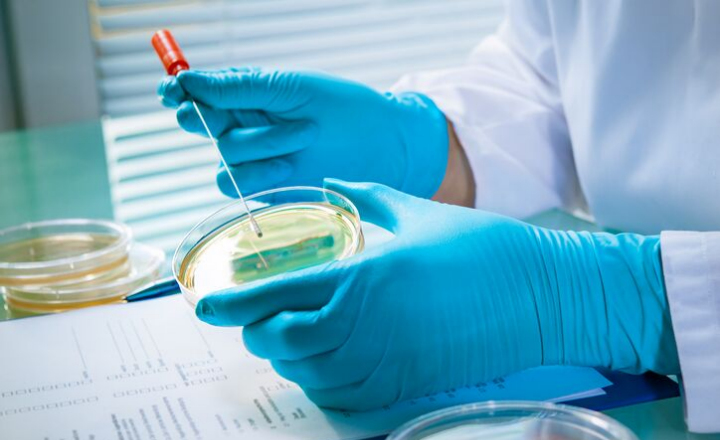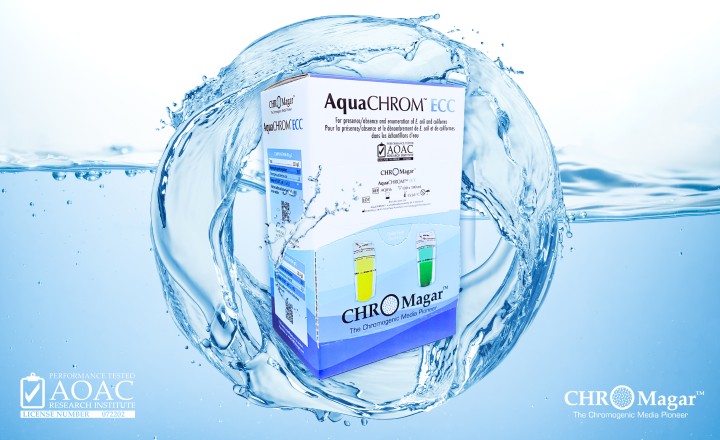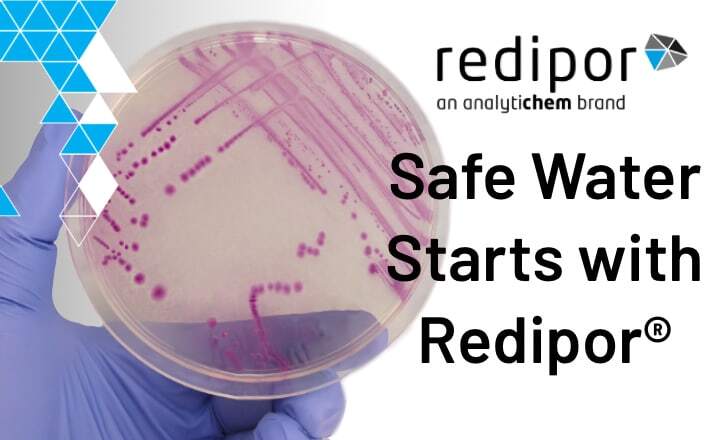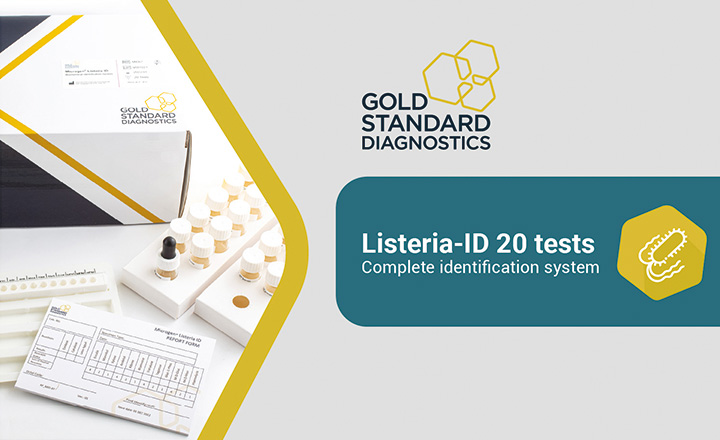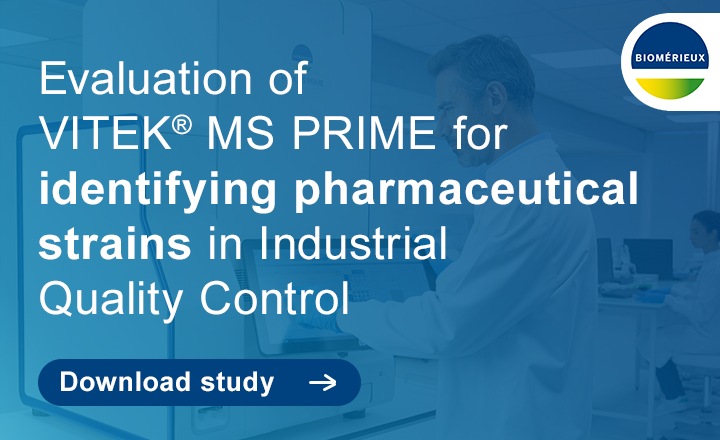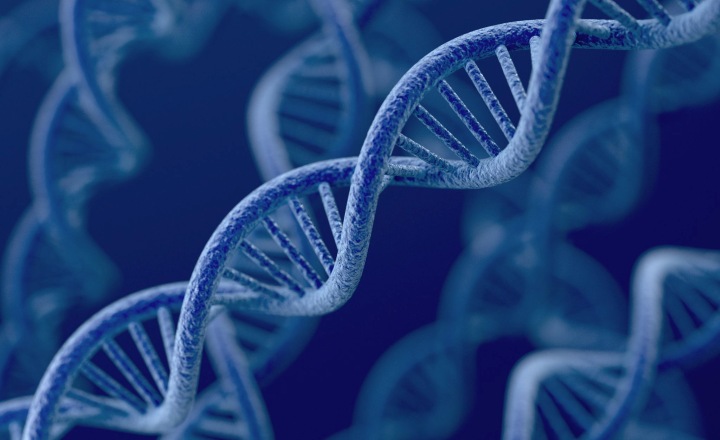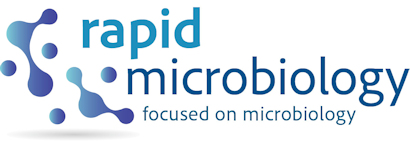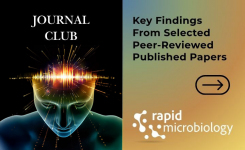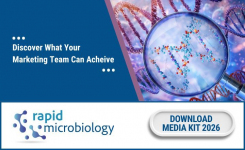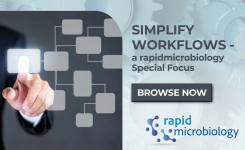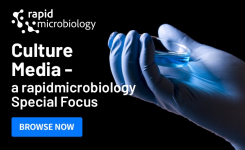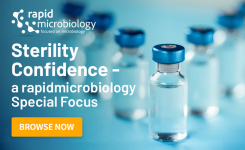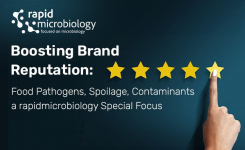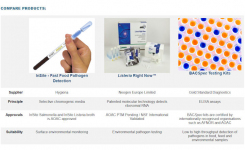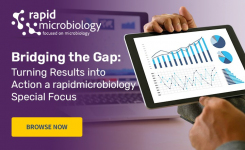On the 10th of December, 2019, microbiologists from both the UK and Ireland attended an event organised by the Society of Chemical Industry’s (SCI) entitled ‘Rapid Confirmation using MALDI-TOF III’ which focused on the adoption of this technology in the food and water industry. The eleven presentations on the day from both commercial and research perspectives demonstrated how this rapid identification instrument has improved their workflow and gave food for thought for the audience to take back and apply to their own laboratories.
MALDI-TOF (Matrix-assisted laser desorption/ionization time-of-flight mass spectrometer), how does it work? MALDI TOF identifies microorganisms using mass spectrometry to determine the unique proteomic fingerprint of an organism. Reliable and accurate identification is achieved by matching an unknown's proteomic fingerprint to a database that has been built up from thousands of reference strains. The relevant commercial clinical databases are fit for purpose and are continually incorporating new species, including food and water-related species. The user can also set up a supplementary own personal database for use in conjunction with the instrument manufacturer database.
In this report by rapidmicrobiology.com, the presentations are summarised to convey how each presenter has advanced into this new era of real-time food and water microbiology after implementing MALDI-TOF technology in their laboratories.
Are you putting together a business case for MALDI-TOF?
Rhys Stephens and Matthew Jones from the Welsh Water Company attended this event two years ago and recommended to their manager that the company purchase a MALDI-TOF platform. If Rhys and Matthew could put together a business case, their manager, who is a chemist, would be only too happy to acquire such an instrument.
The not-for-profit company caters for 3 million people and is the 6th largest water company in the UK. Still, the laboratory did not record enough positive samples to warrant capital investment in a MALDI-TOF instrument. Identification methods used in the lab, were biochemically based, with a low cost per test. But in an incident where a presumptive but unconfirmed Enterococci was recorded and a potential forty-thousand people could have been issued with a boil water notice, the speed and accuracy limitations of their methods were highlighted. The cost of issuing the notice for a presumptive result was circa £2 million, and when results finally came back confirming that it wasn’t positive, it demonstrated that there was a cost case for the purchase of an instrument. After securing funding for the investment, gaining UKAS accreditation to ISO 17025:2017 DWTS (Drinking Water Testing Specification) and implementing MALDI-TOF, so far just for investigatory samples, the Welsh Water Company are now working with the Standing Committee of Analysts to develop a MALDI-TOF Blue Book for the UK water industry.
Complimenting MALDI Biotyper® with Chromogenic Media
The reasons behind the marketing partnership established between Bio-Rad and Bruker last year was demonstrated here in Veronica Ponnuthurai’s (Bio-Rad, Food Sciences Division) presentation ‘High Performance of Bio-Rad’s chromogenic media combine with high technology of MALDI Biotyper to offer a complete and rapid solution for isolation and confirmation of foodborne pathogens from food and environmental samples.’
Chromogenic media provide presumptive identification of microorganisms and have been accredited, in conjunction with MALDI-TOF technology, to test for food pathogens. One notable change in ISO standards, relates to Salmonella testing, the previous protocol (replaced by ISO 6579-1 2017) utilised the organisms’ ability to produce hydrogen sulphide. But a recent food recall incident involving atypical S. agona, which does not produce hydrogen sulphide, and had been mistaken for Proteus sp., resulted in the removal of a 2nd selective agar based on hydrogen sulphide. The protocol now allows for C8-esterase chromogenic media such as Bio-rad's Rapid'Salmonella medium to be used as a 2nd selective plate.
The introduction of chromogenic media as a 2nd selective media, as explained by Veronica Ponnuthurai, reduces time significantly from 3-4 days to 2 days. A streak can be taken directly from the chromogenic plate, instead of using a non-selective media for pure colonies, and applied immediately to the Maldi-Biotyper which can give a confirmatory result in minutes. The media has been accredited by AFNOR (Europe), Nordval and Microval (Scandanaivan) and Health Canada. The Biotyper was also awarded AOAC Method of The Year for 2018 after been approved for the confirmation and identification of both gram-positive and gram-negative organisms in food.
Roy Betts of Campden BRI: Have you MALDI’ed it?
Dr Roy Betts is Head of Microbiology at Campden BRI, providing standard contract laboratory services for the food industry. With the aid of MALDI-TOF technology, Campden BRI can provide rapid turnaround results to the sector. Roy gave examples of how useful the MALDI-TOF has been in providing clients with same-day results to allow them to take appropriate action faster. By taking swabs at client sites and analysing by MALDI-TOF, identification is instantaneous. With this information and some quick research, identification and the possible source is given back to the client the same day.
With the aid of the MALDI-TOF, Roy and his team have been able to show how inefficient their clients' pathogen eradication procedures are, revealed sources of discolouration on ready-to-eat meals, sources of off-flavours in dairy products and identifying trends in multiple biofilm samples, allowing same-day conclusions to be given to the client. The MALDI-TOF has become a stalwart within Roy’s lab, that whenever anyone has a question over an isolate, the reply usually is “Have you MALDI’ed it?
A brief summary of other presentations on the day:
Erika Tranfield, Bruker UK, 'The First ISO 16140-6 validation study for pathogen confirmation: MALDI Biotyper'. This presentation informed attendees on how the MALDI Biotyper from Bruker achieved accreditation in 2019, sold 3350 units since then and is the first AOAC-OMA and ISO 16140-part 6 validated MALDI-TOF method for microbiology of the food chain confirming selected pathogens (which include: Salmonella spp., Cronobacter spp.,Campylobacter spp., Listeria spp, L. monocytogenes) directly from selective agar plates. The MALDI Biotyper reference library can identify more than 3000 species, based on strains collected worldwide, in collaboration with CDC's Microbenet and is annually updated to ensure robustness.
Valérie Monnin, bioMérieux, 'Vitek® MS for identification and beyond'. Vitek® MS is bioMérieux's version of the MALDI-TOF platform. The latest version v3.2 has a knowledge base of 1316 species, including Brucella, and more than 45000 spectra. In the next update, moulds responsible for food spoilage will be implemented, Bacillus cereus and Bacillus subtillis groups will be identified at the species level, and new BSL3 species will be added which include Burkholderia mallei and B. pseudomallei. There is also work been done developing an algorithm for the differentiation between E.coli/Shigella, which current MALDI-TOF instruments cannot perform.
Pervinder Singh Johal, ALS Environmental Ltd, 'Use of MALDI-TOF in a high throughput routine contract laboratory for food and water analysis'. ALS Environmental are using MALDI-TOF as an accredited tool (UKAS, ISO 17025) for several microbiology parameters which include Legionella, Total Coliforms, E. coli, Enterococci, Clostridium perfringens, Pseudomonas, Listeria and Salmonella. This presentation highlighted how from a public health perspective, the use of MALDI-TOF has significantly improved the time taken to report confirmed results to the many industries that ALS Environmental and ALS Food and Pharma service. These included supermarkets, the water utilities, facilities management companies, consultants, hospitals and local authorities. The timely reporting of pathogens in food products, raw materials or water in supply that may impact on public health is critical. The time savings offered by MALDI-TOF of confirmed results means that these industries can react more quickly to any incidents and outbreaks.
Mike Reeve, CABI, 'New MALDI-TOF MS methods and application. CABI (Centre for Agriculture and Bioscience International) is a not-for-profit organisation working with developing countries on crop losses due to fungus and insects. Due to the remoteness of these locations, the team at CABI needed to develop methods appropriate for the local conditions. The team at CABI have developed; A highly simplified and inexpensive MALDI-TOF MS sample preparation method with broad applicability to microorganisms, plants, and insects; a simple and affordable method for practical storage of field-sample proteins for subsequent MALDI-TOF MS analysis and a method for filamentous fungal growth and sample preparation aimed at consistent MALDI-TOF MS spectra despite variations in growth rates and/or incubation times.
Pauline Kiva, CrownCork (Crown Technology), 'MALDI TOF-MS, the identification method that keeps on giving'. Crown is a leader in metal packaging technology, with net sales of $11.2 billion and operations in 47 countries. The company have been using MALDI-TOF for five years in understanding microbiology hygiene issues for clients and helps improve key hygiene parameters within their European plant network.
Dorina Timofte, University of Liverpool, 'IR biotyper and acuitas resistome-new molecular tools for infection control in veterinary hospitals'. On the issue of infection control in veterinary hospitals and the current surveillance methods, Dorina talked about how her department compared results obtained from the Acuitas Resistome Test (OpGen, A PCR-based assay) and those obtained by Fourier transform infrared (FT-IR) spectroscopy with the IR-Biotyper (Bruker) on E. coli typing. In conclusion, the IR-Biotyper provided faster results with better resolution for the identification of clonal relationships and was deemed more suitable for infection control protocols. By using this as an example, its use in the food industry, due to its low running costs and fast turn-around, was highlighted of having great potential over molecular tools when looking at the transmission of bacterial pathogens via the food chain or water sources.
AJ Bradley, Quality Milk Management Services Ltd (QMMS), 'Digging Deep: Mining spectra to inform treatment decisions'. MALDI-TOF has been the primary means of micro-organism identification, at QMMMS since 2011. It is being used for routine clinical diagnostics and the investigation of milk quality issues. By using the MALDI-TOF, the team at QMMS were able to discriminate different strains of Streptococcus uberis, found in bovine mastitis samples, based on their behaviour as 'contagious' or 'environmental pathogens'. This can improve their approach to controlling the pathogen and provide better antibiotic stewardship.
Louise Duncan, King's College London, 'Isolation of putative strains of Pseudomonas aeruginous in the environment and verification using mass spectrometry'. Louise's PhD project is focused on the transmission of Pseudomonas aeruginosa into lungs of cystic fibrosis (CF) patients and its concomitant carriage of antibiotic resistance. MALDI-TOF was used to map the sites and diversity of P. aeruginosa strains isolated from the environment to reveal any differences between those found in a CF patient's lung to those found in the environment.
The MALDI-TOF event is a biennial event, and the next one is scheduled for 2021.


